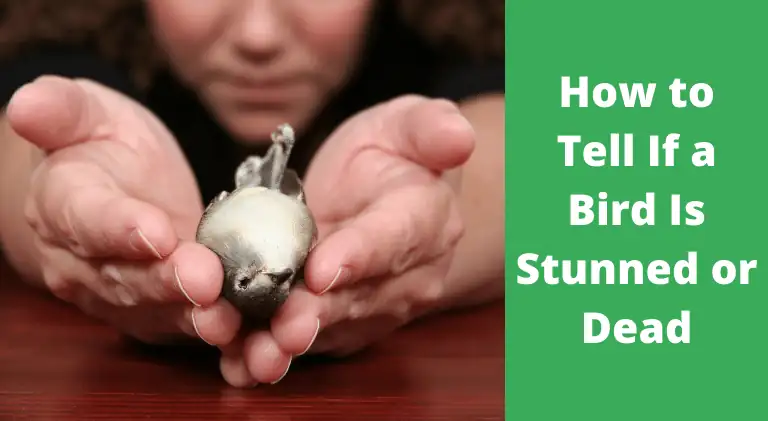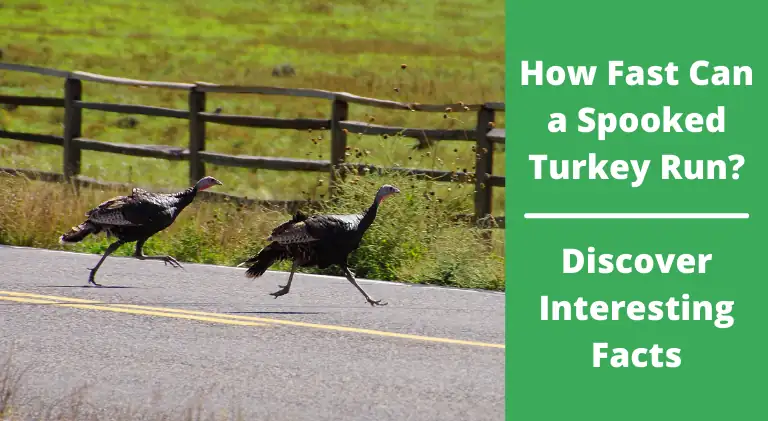What Bird Lays Blue Eggs – (16 Types of Birds)
The color blue is a hue that’s often used in art and design to evoke feelings of trustworthiness, serenity, and tranquility. But what about the egg? What bird lays blue eggs?
It turns out there are several birds that lay blue eggs! I have compiled a list of all those blue egg-laying birds just for you. So if you are interested in learning about such kinds of birds then read on to learn more about them.
Keep in mind that I have covered all birds to the best of my knowledge in my list. Every time I find a blue egg bird, I will update it.
Please Note: This article gets updated frequently based on the latest researches and findings. I may have added some birds whose eggs were just slightly blue as blue eggs bird but I am refining it along with proper references and pictures of the eggs with time.
List of Birds that Lay Blue Eggs
| Bird Species | Egg Color | Location Found |
| American Robin | Light blue with brown speckles | North America |
| Eastern Bluebird | Completely light blue | Eastern and Central North America |
| Mountain Bluebird | Light blue with little to no markings | Western North America |
| Brown-headed Cowbird | Light blue with brown speckles | North and Central America |
| Common Murre | Dark blue with black squiggles | Coastal regions worldwide |
| Eurasian Jay | Light blue with brown speckles | Europe and Asia |
| Great Tit | White with light blue speckles | Europe and Asia |
| House Sparrow | Light blue with brown speckles | Worldwide |
| Eastern Phoebe | White with light blue speckles | Eastern North America |
| European Robin | Light blue with brown speckles | Europe and Asia |
What Kind of Bird Lays Blue Eggs?
1. Blue-footed booby
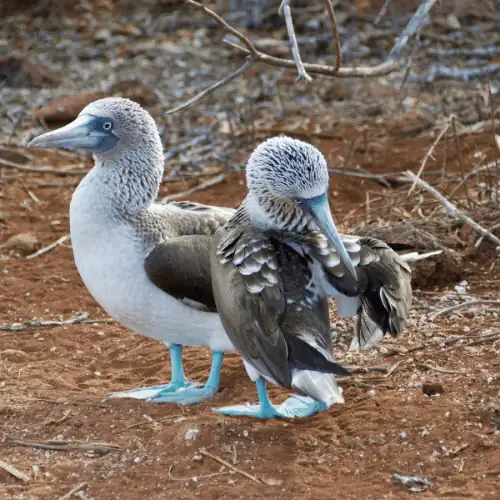
When it comes to what birds lay blue eggs the blue-footed booby is the first one that comes to my mind.
The blue-footed booby is a seabird of the booby family, Sulidae. It is the only member of the genus Sula.
The bird is native to subtropical and tropical regions of the eastern Pacific Ocean, with two distinct breeding populations. One in the Galapagos Islands, and the other in the Andes Mountains of Peru and Chile.
The blue-footed booby lays a light blue-green colored egg, which hatches into a chick with brownish-red down. The young birds leave their nests within ten days of hatching before they can fly, doing so by hopping and fluttering to the ground.

2. The Eastern Bluebird
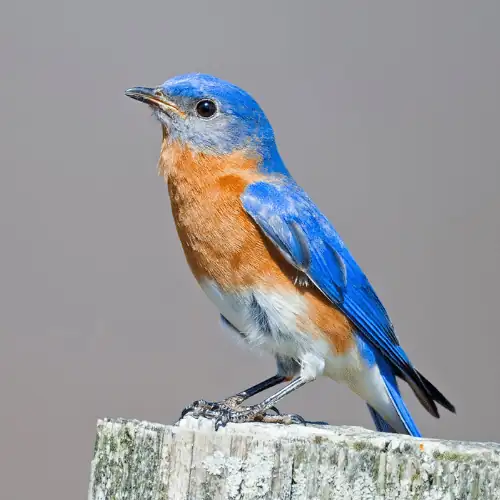
The eastern bluebird is a small thrush widely distributed across North America. It has been given the name eastern due to where the majority of them breed, which is in eastern North America from Alaska all the way into central Quebec and Ontario down to northern Florida. These birds are one of several species of bluebirds, which is a type of thrush.
The female bluebird lays 3 to 6 light blue eggs in a nest that’s usually found inside holes like those of oak trees and stumps, and also in bird boxes put up by people specifically for the purpose of hosting this species.

3. The Red-flanked Lorikeet

The red-flanked lorikeet is a small colorful parrot species that are native to Australia and New Guinea. They’re known for their red cheeks, bright green feathers on their head, backs, and wings, and blue feathers covering much of the rest of their bodies.
The female Red-flanked lorikeet will typically lay 2 to 3 eggs at a time in a hollow in a tree or in an existing nest. These eggs will hatch after about 18 days, at which point the young birds will remain in the nest for about another month and a half.
4. The Roseate Spoonbill
The roseate spoonbill is a wading bird that’s native to North and South America, as well as the Caribbean islands. It gets its name from the pink coloration on its head and neck, which contrasts with the white feathers covering most of their bodies.
The female roseate spoonbill will lay 2 to 5 eggs in a large mound that she makes out of rotting plants and other matter while standing over them for about 30 days while they incubate.
5. The African Fish Eagle
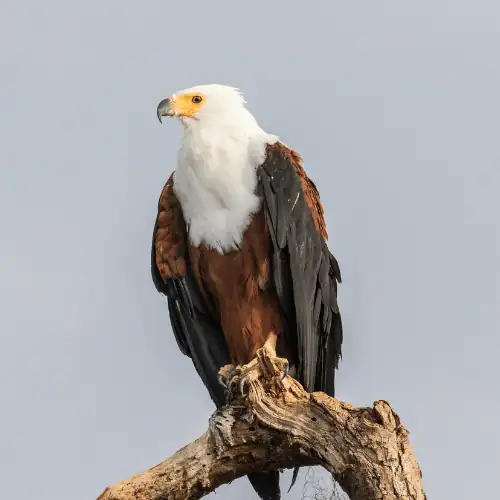
The African fish eagle is a large bird of prey that’s native to sub-Saharan Africa and the Nile River Valley. It feeds primarily on fish, as well as crabs, frogs, and turtles. And it can use its powerful beak to crack open crab shells.
This species of raptor will typically lay 1 to 3 eggs in a large stick nest that they build on top of trees or cliff faces where there is a clear view of the surrounding area. The chicks will hatch after about 40 days and be cared for by both parents, with some assistance from older siblings, until they’re able to fly at around 6 months old.
6. The Gray Crowned Crane
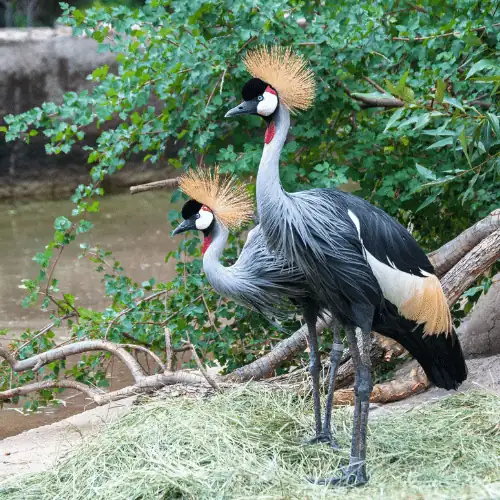
The gray crowned crane is a large bird that can be found through much of eastern and southern Africa. They’re known for their long necks, white faces, and black crowns on top of their heads.
This species of crane tend to lay 2 eggs in the same nest where they were born about 35 days later, where both parents will take turns caring for them until they fledge, which takes about 30 days.
7. The Emperor Penguin

The emperor penguin is a large flightless bird that lives throughout Antarctica and is one of only 3 species of penguins in the Southern Hemisphere. They’re known for their black and white feathers along with blue eyes.
The female emperor penguin will lay 1 to 2 eggs after mating with the male emperor penguin, which they’ll take turns tending to for about 8 weeks.
The parents will then protect their baby through the harsh Antarctic winter, where it can get really cold. It is usually around -76 F (-60 C), but they leave for 10 minutes at a time to hunt.
8. The Red-crowned Crane
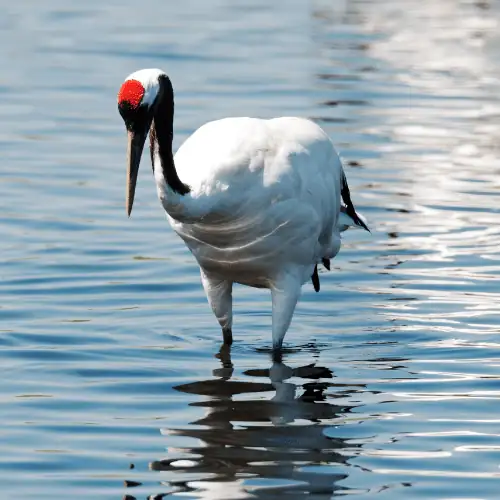
The red-crowned crane is a large bird that’s found throughout eastern Asia, including China and Japan. They’re known for their extremely long legs, yellow skin on their faces, black feathers along both sides of their heads, and red crowns on top of their heads.
The female red-crowned crane will lay 2 to 3 eggs in an existing nest that takes about 30 days to hatch after which both parents tend to the young for another month before they’re able to fly away from the nesting area.
9. American Robin

If you are thinking about what bird lays blue eggs and you don’t see the American Robin on the list then I highly doubt that list. The American robin is a common bird found in North America.
They are mostly brown on top with a lighter color, white belly and they have a dark spot under the eye.
They eat worms, insects, and berries. The female American robin can lay up to 7 eggs per season but usually lays around 5 of them at a time over 3 weeks. The American robin’s eggs are light blue in color.

10. Blue Jay

The Blue jay is a medium-sized bird that lives throughout Canada and the United States. They’re known for their loud calls which often sound like “jay!” along with their colorful body, crest and they have dark rings around their eyes.
The female blue jay can lay up to 2 to 7 eggs per season. The Blue jay’s eggs are blue in color and speckled with brown spots.
11. Blackbird

The blackbird is a medium-sized bird known for its chirping call and the males of the species have a yellow beak with a red spot on top. They’re found in Europe, Asia, and North America.
The female blackbird can lay up to 5 eggs per season but usually lays around 4 of them at a time over 2 weeks. The blackbird’s eggs are also blue in color and speckled with green spots.
12. Song Thrush
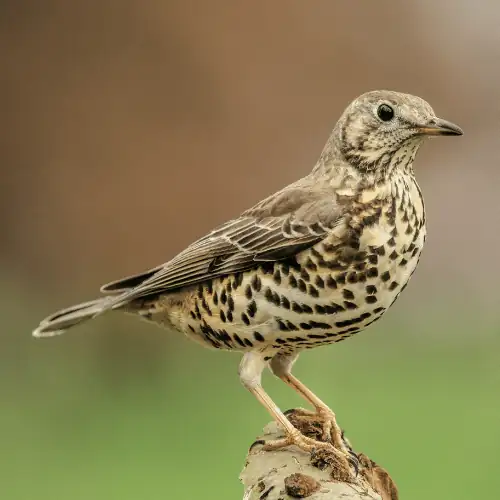
The song thrush is a small bird known for its song and its common brown, greyish body. The male has an orange breast while the female has a lighter brown shade. They’re found in Europe, Asia, Africa, and North America.
The female song thrush can lay up to 3 to 5 eggs per season. Their incubation period is around 13 to 15 days. The color of the song thrush eggs is also blue or more of a light blue.
13. Dunnock
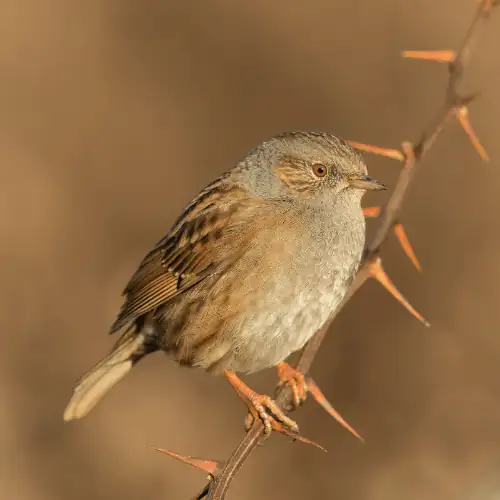
Speaking of birds laying blue eggs, the Dunnock is another one on the list. The Dunnock is a small bird that’s mostly brown in color. The male of the species has an orange-colored breast while the female has more of a greyish shade. They’re found throughout Europe, Asia, North America, and Africa.
The female Dunnock can lay up to 3 eggs per season but usually lays around 2 of them at a time over 14 days. The Dunnock’s eggs are blue in color and speckled with orange spots.
14. Starling
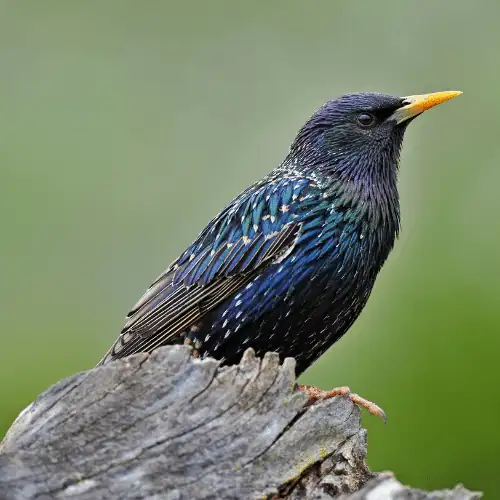
Another member of the blue eggs laying birds is the starling. Starlings are found throughout Europe, Asia, and North America. They’re known for their unique song that sounds like they’re clearing their throat.
The female starling can lay up to 4 eggs per season but usually lays around 3 of them at a time over 14 days. The color of the starlings’ egg is pale blue in color speckled with light brown spots.
15. Magpies
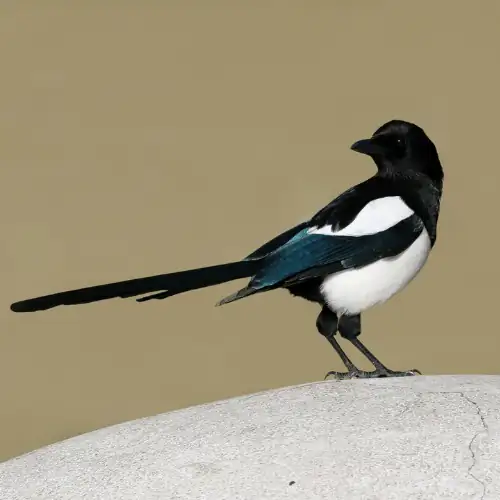
Have you heard about magpies before? yes, they are also one of those birds that lay blue eggs. So next time if your little daughter asks you about what bird lays blue eggs make sure to tell her about the Magpies too.
The magpie is a medium-sized bird that’s mostly black and white in color. The female Magpie has more of a greyish shade on top while the male one has an orange-colored chest. They’re found throughout Europe, Asia, and North America.
The female Magpie can lay up to 7 eggs per season but usually lays around 5 of them at a time over 2 to 3 weeks. The Magpie’s eggs are also blue in color and speckled with brown spots.
16. House Finch

Last but not least, the House Finch is another blue egg-laying bird. The House Finch is a medium-sized bird known for its diet of thistle seeds and fruits, the red color on its heads during mating season, and its song which sounds like “peter-peter-peter”.
The female House Finch can lay up to 4 eggs per season but usually lays around 3 of them at a time over 12 days. The female House Finch’s eggs are also blue in color and speckled with brown spots.
What Bird Lays Small Blue Eggs?
Several bird species lay small blue eggs. Some of these species include the Blue Tit (Cyanistes caeruleus), which is a small bird found in Europe and parts of Asia.
The Blue Tit is known for its beautiful blue and speckled eggs, which are relatively small in size. Another species that lays small blue eggs is the Carolina Chickadee (Poecile carolinensis), a small bird found in North America.
The Carolina Chickadee’s eggs are also blue and speckled, but they are even smaller than the Blue Tit’s eggs. Finally, the Bushtit (Psaltriparus minimus) is another small bird found in North America that lays small blue eggs.
These birds are known for their tiny, hanging nests, and their blue eggs are small and speckled as well. .
Final Words
What birds have blue eggs? well, there is more than one bird that lays blue eggs. Next time when someone asks you which bird lays blue eggs you should refer them to this article.
After reading this article, you should be able to know about different kinds of birds with blue eggs (i.e. either completely blue or partially with some kind of speckles on them).
In addition, you should also be able to answer your kid’s questions in a much better way now.
Hope this article was helpful and you like it!
Please don’t forget to show your support by sharing this article with your friends and family on Reddit and Pinterest.
Thank you and happy bird watching.



